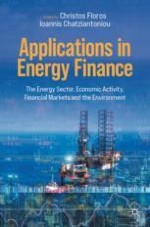2022 | OriginalPaper | Chapter
9. Minimum Connectedness Portfolios and the Market for Green Bonds: Advocating Socially Responsible Investment (SRI) Activity
Authors : David C. Broadstock, Ioannis Chatziantoniou, David Gabauer
Published in: Applications in Energy Finance
Publisher: Springer International Publishing
Activate our intelligent search to find suitable subject content or patents.
Select sections of text to find matching patents with Artificial Intelligence. powered by
Select sections of text to find additional relevant content using AI-assisted search. powered by
